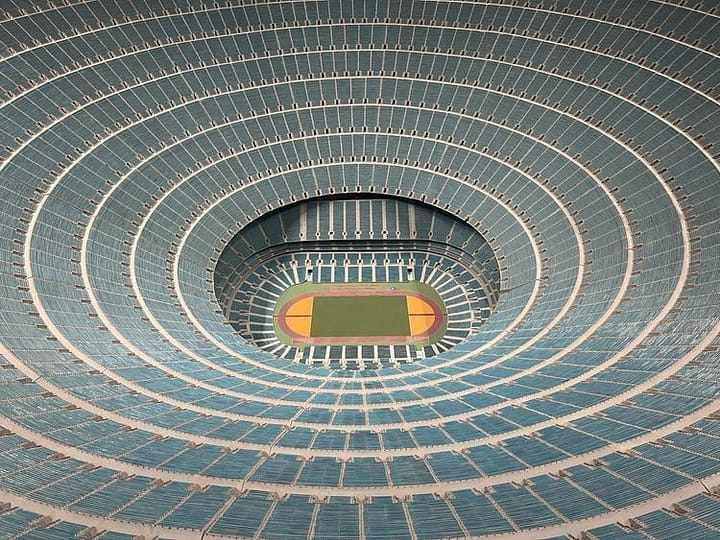PAUL PFEIFFER: PROLOGUE TO THE STORY OF THE BIRTH OF FREEDOM
Museum of Contemporary Art
Los Angeles
Through June 16, 2024
I hate sports. I’ve come around to physical activity in general, but something about sports … Maybe it’s the arbitrariness of their rules, or the oxygen of public discourse they consume. More likely, it’s because most of the hot dudes at my high school were good at them, and back then, my angsty teenage self felt lacking in both the athletic and attractiveness departments.
Even as I enter my twunk era, you’re infinitely more likely to find me in a gallery than a stadium — and so it was with a mixture of fascination and disdain that I visited Prologue to the Story of the Birth of Freedom, Paul Pfeiffer’s career-spanning retrospective, last month. The show is up through June at the Geffen Contemporary, the Museum of Contemporary Art’s sprawling annex in Little Tokyo; there, the gratifyingly extensive exhibit illustrates how, during a career spanning three decades, Pfeiffer has developed a transdisciplinary practice exploring the nexus of spectacle and belonging. By manipulating photographs and videos of televised sports events and other forms of popular entertainment in particular, Pfeiffer examines our quasi-religious devotion to athletes and other celebrities.
Any artist showing at the Geffen has to decide how to contend with the gallery’s sheer size. Too often, MOCA’s curators have lent some or all of the former police car warehouse’s 40,000 square feet to troglodytes like Carl Andre and bro art aficionado Doug Aitken. In Pfeiffer’s hands, however, expansiveness feels appropriate, even and especially when the space his retrospective occupies (clocking in at a clean 20,000 square feet) is totally out of proportion with his work. Beginning at the exhibition’s entrance, Pfeiffer uses spatial disparities to his advantage, displaying a selection of his quintessential basketball videos on tiny monitors and projectors that are impossible to watch unless your nose sits only a few inches from the screen.
At times, the extent to which Pfeiffer manipulates space verges on the humorously absurd. His installation The Saints (2007) recreates the 1966 World Cup Final between England and West Germany by displaying a single video on a small LCD screen; the accompanying sound is routed through 17 speakers arrayed around the room like sentinels. For this twink-cum-critic, wading through thick audio rivers toward the only scrap of visual information in an otherwise bare room produced a feeling difficult to fit into language.
For all of its historical scope, the survey also contains new works, such as the most recent addition to Pfeiffer’s Incarnator series. Since 2018, Pfeiffer has created multimedia installations in collaboration with Spanish, Mexican, and Philippine producers of “santos,” life-size wooden sculptures of saints and other devotional figures used to decorate churches and private residences. At the Geffen, Pfeiffer chose to represent Justin Bieber, the quintessential Canadian pop star and born-again Christian. Gazing out at his body, mounted piecemeal like shiny slabs of meat, I remembered when the then-baby-faced tenor played and was named MVP in the 2011 NBA All-Star Celebrity Game. As then, so now: most valuable indeed.






